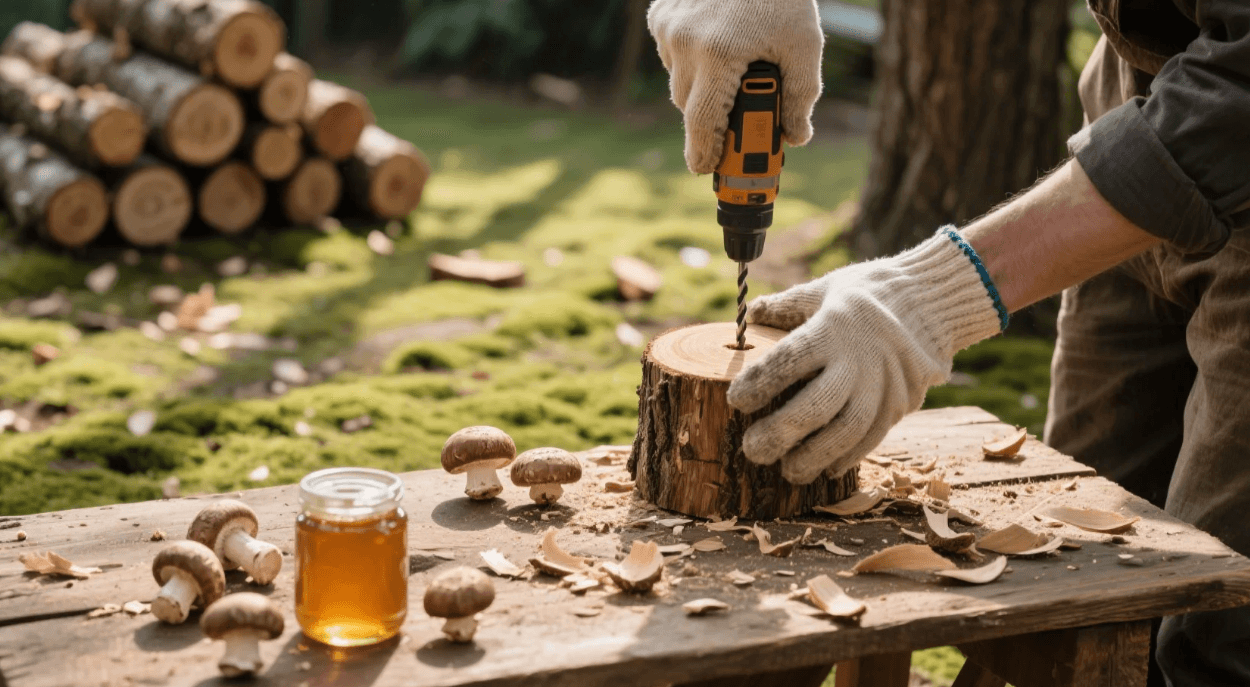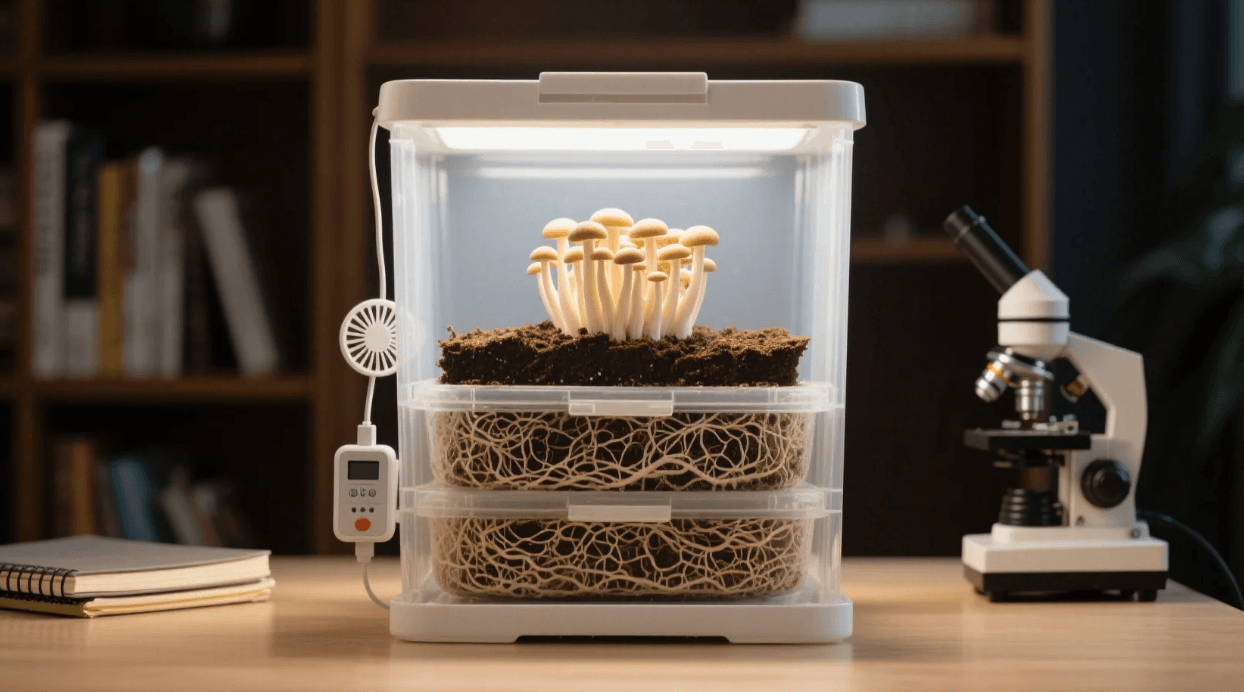Grow Mushrooms at Home: Oyster & Shiitake Kits Compared
Imagine harvesting gourmet mushrooms in your kitchen—no garden, no sunlight, just fresh fungi in weeks. With the rise of urban farming, mushroom growing kits have become a low-effort, high-reward way to produce food at home. But which method works best? Oyster mushroom bags? Shiitake log inoculation?
This guide compares the top home-growing techniques, their yields, and which one suits your space—whether you're in a tiny apartment or have a backyard.
Why Grow Mushrooms at Home?
According to a 2023 USDA report, home mushroom cultivation has surged by 200% since 2020, thanks to:
✅ Faster than vegetables – Harvest in 2-4 weeks vs. months for tomatoes
✅ Space-efficient – Grows in closets, basements, or under sinks
✅ Nutrient-dense – Oyster mushrooms contain immune-boosting beta-glucans (Journal of Agricultural Science, 2022)
✅ Sustainable – Grows on coffee grounds, sawdust, or logs
Case Study: Seattle urban farmer Priya grows 5 lbs of oyster mushrooms monthly in her studio apartment using a $30 kit.
Method 1: Oyster Mushroom Grow Kits (Easiest for Beginners)
How It Works
- Pre-inoculated bags of sterilized substrate (straw, coffee grounds, or sawdust)
- Just add water and wait for mushrooms to sprout
Pros & Cons
| Pros | Cons |
| ✅ Harvest in 10-14 days | ❌ Short lifespan (2-3 flushes) |
| ✅ No special tools needed | ❌ Limited to oyster/lion’s mane varieties |
| ✅ Works in small spaces | ❌ Not as sustainable (plastic waste) |
Best For:
- First-time growers
- Apartments with no outdoor space
- Quick, reliable harvests
Personal Recommendation: Back to the Roots Oyster Kit – Foolproof and great for kids.
Method 2: Shiitake Log Inoculation (Traditional & Long-Term)
How It Works
- Drill holes in hardwood logs (oak, maple, or beech)
- Insert shiitake spawn plugs
- Seal with wax and wait 6-12 months for colonization
Pros & Cons
| Pros | Cons |
| ✅ Produces for 3-5 years | ❌ Takes 6+ months for first harvest |
| ✅ Higher yields per square foot | ❌ Requires outdoor space (or a humid basement) |
| ✅ Sustainable (no plastic waste) | ❌ More labor-intensive setup |
Best For:
- Patient growers
- Backyard or forest gardens
- Those who want a long-term mushroom supply
Case Study: Vermont homesteader Jake inoculated 20 oak logs in 2021—now he harvests shiitakes year-round by soaking logs in cold water.
Method 3: DIY Bulk Substrate (For Advanced Growers)
How It Works
- Sterilize sawdust, straw, or coffee grounds
- Inoculate with grain spawn
- Grow in monotubs or humidity tents
Pros & Cons
| Pros | Cons |
| ✅ Cheapest per pound of mushrooms | ❌ High contamination risk for beginners |
| ✅ Customizable (try exotic species) | ❌ Requires pressure cooker & sterile technique |
| ✅ Scalable for large harvests | ❌ Needs more equipment |
Best For:
- Experienced mycologists
- Growers who want lion’s mane, reishi, etc.
- Zero-waste enthusiasts (uses upcycled substrates)
Regional Tip: In dry climates (Arizona, Nevada), use a humidity tent to maintain 80%+ moisture.
Key Factors to Consider
1. Time to Harvest
- Oyster kits: 10-14 days
- Shiitake logs: 6-12 months
- Bulk substrate: 3-6 weeks
2. Space Requirements
- Kits: Fits on a countertop
- Logs: Needs outdoor shade
- Bulk: Requires shelves/tubs
3. Cost Comparison
| Method | Startup Cost | Cost per Pound |
| Oyster Kit | 20−40 | 5−10 |
| Shiitake Logs | 50−100 | 1−3 (long-term) |
| Bulk Substrate | $100+ | <$1 (at scale) |
Personal Pick: I recommend starting with an oyster kit, then expanding to logs if you love it.
Mushroom Growing Troubleshooting
❌ No mushrooms forming? → Increase humidity (use a spray bottle or tent)
❌ Mold contamination? → Sterilize tools better next time; discard infected batches
❌ Drying out too fast? → Move away from direct airflow (fans, vents)
Pro Tip: If growing indoors, place mushrooms near a north-facing window—they like indirect light.
Final Verdict: Which Method Should You Choose?
For Beginners → Oyster Kit
- Fast, easy, and low-commitment
For Sustainability → Shiitake Logs
- Long-term harvests with no plastic waste
For Advanced Growers → Bulk Substrate
- Cheapest and most versatile
Sources:
- USDA: Home Mushroom Cultivation Trends (2023)
- Journal of Agricultural Science: Nutritional Benefits of Mushrooms (2022)
- RHS: Urban Farming Innovations
Ready to start? Grab a kit, inoculate a log, or dive into bulk growing—your homegrown gourmet mushrooms await! 🍄🌱
Bond
|
2025.04.23






